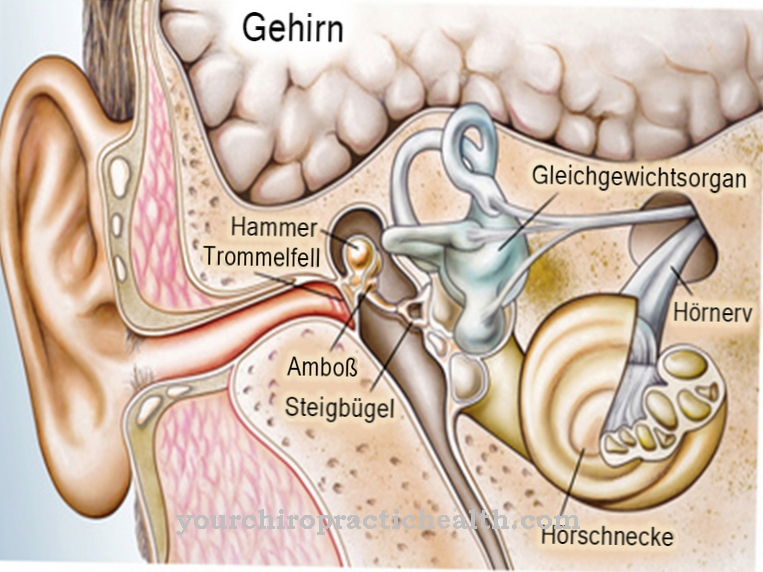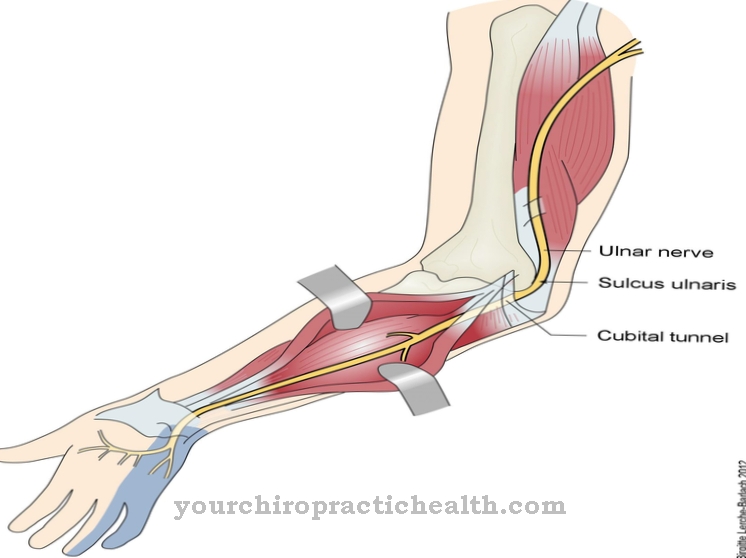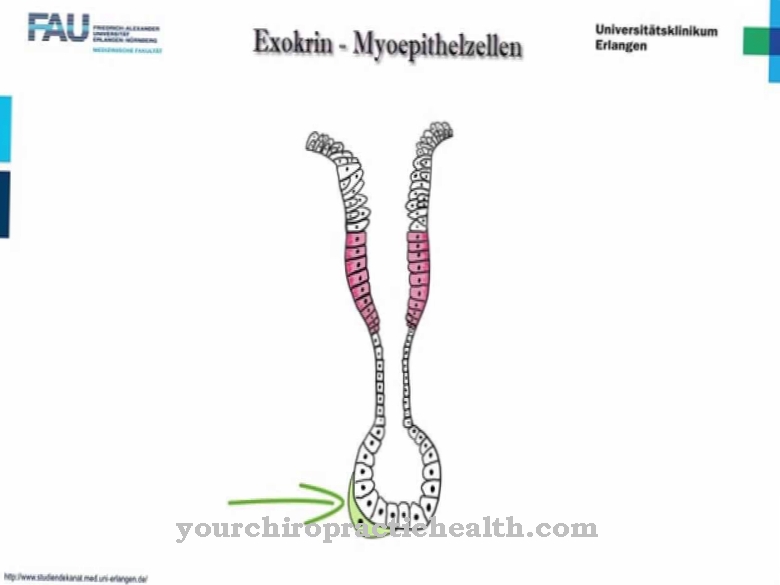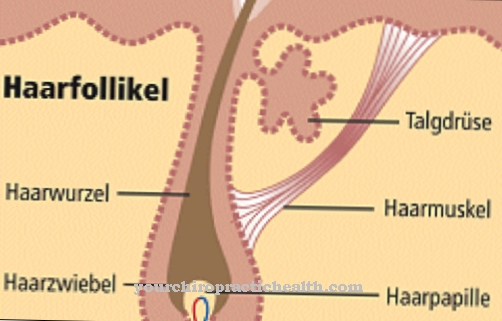The enteric nervous system (ENS) runs through the entire digestive tract and works largely independently of the rest of the nervous system. Colloquially it is also called Abdominal brain designated. Basically, it is responsible for regulating all operations in the entire digestive process.
What is the enteric nervous system?
As the name suggests, the enteric nervous system is responsible for the entire digestive tract. It is called in English second brain or abdominal brain designated. In addition to the sympathetic and parasympathetic systems, it is the third component of the nervous system.
As a second brain or abdominal brain, it has a similar structure to the brain and works on the same principle. It was found to have about four to five times more neurons than the spinal cord. There are complicated interconnections in the enteric nervous system that ensure that the digestive processes are precisely coordinated with one another. It works largely autonomously.
The necessary processes within the digestive tract are regulated independently. However, the ENS is also subject to the influences of the sympathetic and parasympathetic nervous systems. Of course, there are also connections to the main brain. It is assumed that the exchange of information between the enteric nervous system and the main brain influences intuitive decisions (gut feeling).
Anatomy & structure
The enteric nervous system is a network of nerve cells that encompasses the entire digestive area from the esophagus to the rectum. The main components of the ENS consist of two nerve plexuses that are located within the intestinal wall.
This is on the one hand the myenteric plexus (Auerbach's plexus) and on the other hand the submucosal plexus (Meissner's plexus). The myenteric plexus is a complex of nerve cells in the circular and longitudinal muscle layers of the intestine. The submucosal plexus is integrated into the intestinal mucosa. There are also other small plexuses below the serosa, in the circular muscles and in the mucosa itself. In addition to the neurons, there are also interstitial cells of Cajal (Cajal cells).
These are specialized muscle cells that can trigger muscle contractions independently of the nerve cells and thus represent a kind of pacemaker system similar to the pacemaker. The enteric nervous system works autonomously, but is influenced by the sympathetic and parasympathetic nervous systems. The sympathetic system is responsible for lowering motility and secretion within the digestive system. Conversely, the parasympathetic nervous system influences the ENS in such a way that motility and secretion are increased.
Function & tasks
The function of the enteric nervous system is to control the digestive process. It regulates the intestinal motility, the ion transport associated with absorption and secretion, the immunological functions of the digestive tract and the gastrointestinal blood flow. The myenteric plexus is responsible for intestinal motility.
It controls the intestinal peristalsis and at the same time ensures the secretion of enzymes into the intestinal lumen. The myenteric plexus is also supported by the Cajal cells, which start the muscle movements. Although the Cajal cells are not neurons, they are included in the myenteric plexus. The submucosal plexus controls the fine movement of the intestinal mucosa. It is located in the thin layer of smooth muscle that belongs to the mucosa. Together with the myenteric plexus, it regulates the peristalsis of the intestine.
In addition, it autonomously controls the secretion of the glands of the mucosa. He is also involved in the regulation of immunological processes. The enteric nervous system analyzes the food for nutritional composition, water content and salt content and decides on absorption and excretion. Furthermore, it takes over the fine-tuning of the function of inhibiting and activating neurotransmitters. In this way, the bowel function is adapted to external conditions. For example, while concentrating on other activities, bowel peristalsis is inhibited.
In other situations, the intestinal motility is stimulated again. The enteric nervous system is constantly connected to the main brain. However, 90 percent of the information flows from the ENS to the brain and only 10 percent in the opposite direction. This occurs in cases where toxins or pathogens get into the intestines. Then the brain arranges central measures, for example by sending out messenger substances, which lead to the normalization of digestive processes.
Diseases
As a rule, the enteric nervous system can regulate the digestive processes autonomously. However, particularly sensitive people often react to stress or everyday problems with stomach or intestinal disorders. In these cases there are incorrect regulations within the ENS. It is called irritable stomach or irritable bowel.
The symptoms are unspecific. You may experience nausea, vomiting, stomach pain, abdominal pain, gas, diarrhea, or constipation. The fine-tuning between inhibitory and activating digestive processes is disturbed. Although the symptoms are uncomfortable, the disease is not dangerous. Similar processes take place in the enteric and central nervous systems. The function of the neurotransmitters is the same. The transmission of stimuli in the nerve cells also proceeds according to the same principle. It may well happen that in sensitive people an excess of stimuli leads to an increased flow of information between the main brain and the abdominal brain.
Irritable stomach and bowel syndrome can be treated well through lifestyle changes, psychotherapeutic measures, and medication. However, there are also congenital diseases of the digestive system that are due to the lack of nerve tissue in entire sections of the intestine.
An example of such a condition is Hirschsprung's disease. In this disease ganglion cells are absent in the area of the submucosal plexus or myenteric plexus in entire intestinal sections of the large intestine. This leads to an increased formation of upstream parasympathetic nerve fibers, which release acetylcholine. The permanent stimulation of the circular muscles caused by this causes the affected section of the intestine to contract permanently. The result is a chronic intestinal obstruction.



























